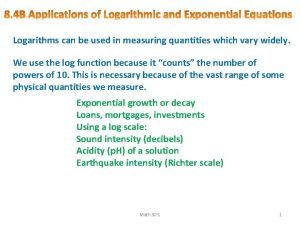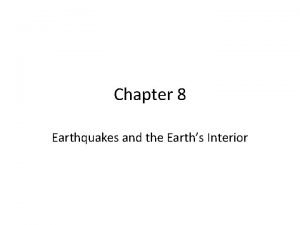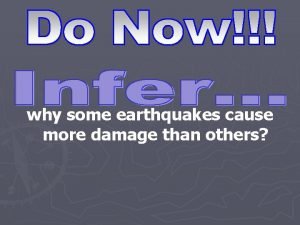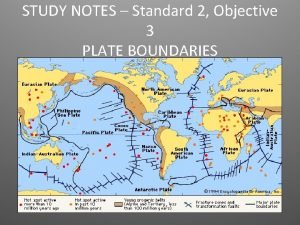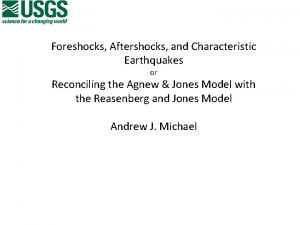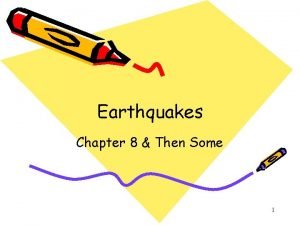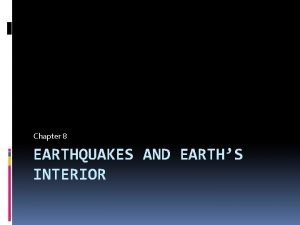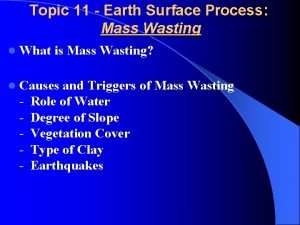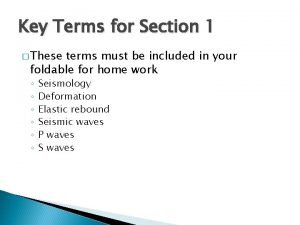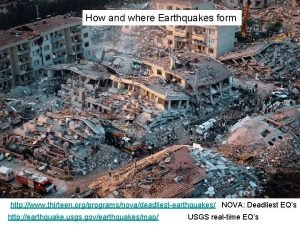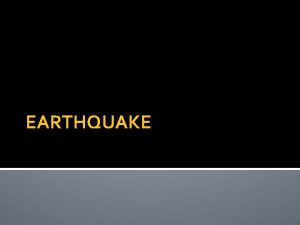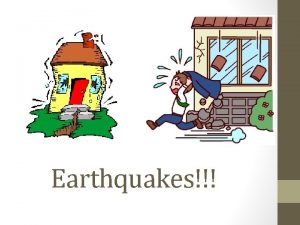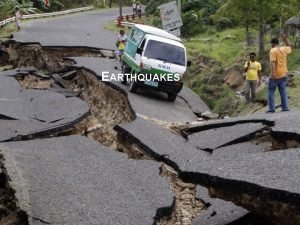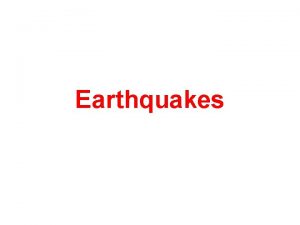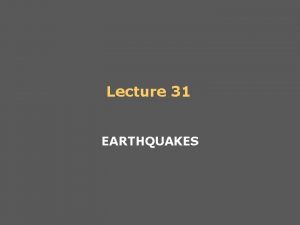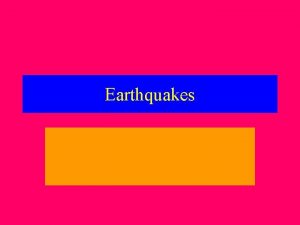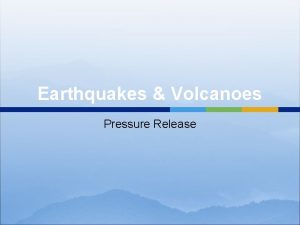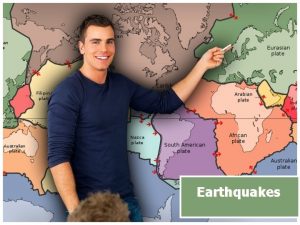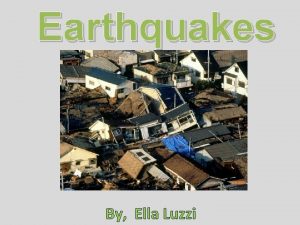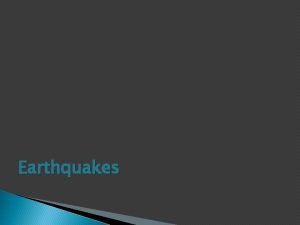Earthquakes Introduction What is an Earthquake An earthquake


















- Slides: 18

Earthquakes – Introduction

What is an Earthquake? • An earthquake is the vibration of Earth produced by the rapid release of energy 2 / 88

Where are earthquakes located? Subduction Zones Boundaries Spreading Centers Continent-Continent Intraplate 3 / 88

What is a Fault? • Faults are fractures in the crust along which appreciable displacement has occurred. Source: 1 4 / 88

Fault Terminology • • Hypocenter Faults Epicenter Elastic Rebound Foreshocks Mainshock Aftershock 5 / 88

Types of Faults 6 / 88

Dip Slip Faults Hanging wall Footwall Movement is primarily vertical and parallel to the fault plane May produce long, low cliffs called fault scarps

Dip Slip Faults: Normal • Hanging wall block moves down relative to the footwall block • Accommodate lengthening or extension of the crust • Fault-block mountains Source: 3 8 / 88

Dip Slip Faults: Normal Large normal fault in Triassic to Lower Jurassic Blue Anchor Formation sediments near Blue Anchor, Somerset, UK. Source: 2 9 / 88

Dip Slip Faults: Reverse faults • Hanging wall block moves up relative to the footwall block • Reverse faults have dips greater than 45° • Thrust faults have dips less then 45° • Accommodates shortening of the crust (compression) Source: 3 10 / 88

Dip Slip Faults: Reverse faults Source: 4 11 / 88

Dip Slip Faults: Thrust faults Source: 5 12 / 88

Strike Slip faults • Dominant displacement is horizontal and parallel to the strike of the fault • Right-lateral • Left-lateral • Transform fault Source: 3 13 / 88

14 / 88

15 / 88

Preparing for Earthquakes • We can’t stop them but we can be ready for them. – – Train the community in earthquake preparedness. Run preparedness drills. Educate individuals on safe behavior and responses. Keep viable stores of emergency supplies. 16 / 88

~ End ~

1. 2. 3. 4. 5. http: //en. wikipedia. org/wiki/San_Andreas_Fault#mediaviewer/File: Kluftphoto-Carrizo-Plain-Nov-2007 -Img_0327. jpg http: //en. wikipedia. org/wiki/Fault_%28 geology%29 http: //www. iris. edu/hq/programs/education_and_outreach/animations/2 http: //clasticdetritus. com/2008/09/19/friday-field-foto-64 -nice-z-fold-inpatagonian-outcrop/ http: //upload. wikimedia. org/wikipedia/commons/a/a 2/Thrust_fault_Qilian_S han. jpg 18 / 88
 Http://earthquake.usgs.gov/earthquakes/map/
Http://earthquake.usgs.gov/earthquakes/map/ In what section of earth do earthquakes happen
In what section of earth do earthquakes happen Btn earthquakes
Btn earthquakes Chapter 8 section 2 earthquake measurement answer key
Chapter 8 section 2 earthquake measurement answer key Explain natural disaster
Explain natural disaster Chapter 8 earthquakes and volcanoes
Chapter 8 earthquakes and volcanoes A large crack in the earth formed by a river or earthquakes
A large crack in the earth formed by a river or earthquakes Chapter 8 earthquakes and earth's interior
Chapter 8 earthquakes and earth's interior Chapter 19 earthquakes
Chapter 19 earthquakes Why do some earthquakes cause more damage than others
Why do some earthquakes cause more damage than others Frequent earthquakes in an area may indicate *
Frequent earthquakes in an area may indicate * Earthquakes
Earthquakes Quiz 1 earthquakes
Quiz 1 earthquakes Chapter 8 earthquakes and earth's interior
Chapter 8 earthquakes and earth's interior Earthquakes
Earthquakes Examples of mass movement
Examples of mass movement Elastic rebound theory
Elastic rebound theory Why do earthquakes occur
Why do earthquakes occur Do earthquakes happen
Do earthquakes happen
